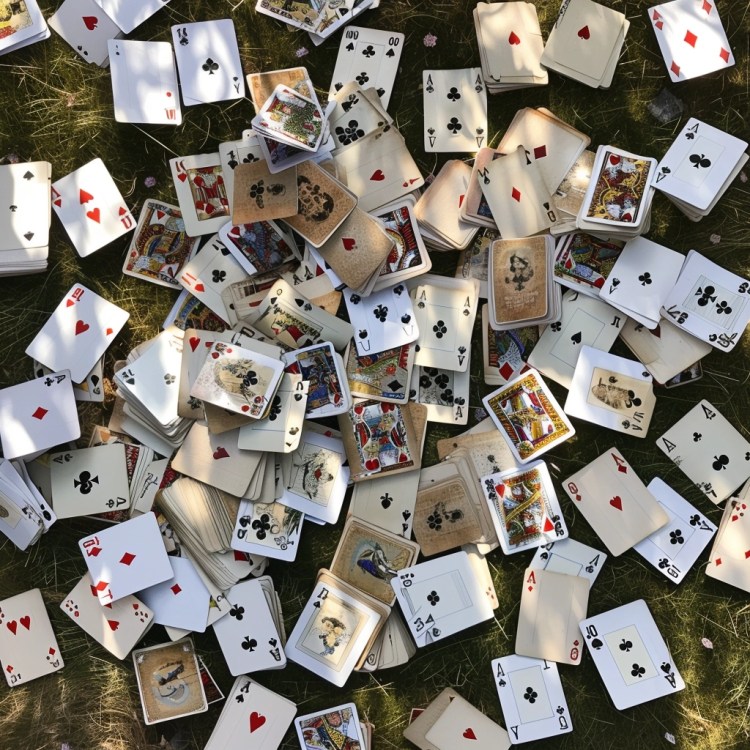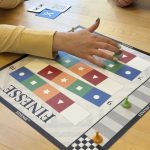500 and Bridge: Exploring the Unique Features of Two Classic Card Games The game of 500 is often called Australia’s national card game. A survey showed that more than half of Australians know the basics of 500, even if they haven’t played since school or remember all the rules. This article explores how 500’s unique features differ from those of Bridge. In truth, 500 is an American creation, as noted by Wikipedia. When the US Playing Card Company copyrighted and marketed its rules in 1904, it formalized and standardized the rules, making the game more widely recognized and played in a consistent manner. Despite today’s students being engrossed in the internet, including YouTube and online gaming, board and card games remain popular. In this article, we will examine the rules of 500 and Bridge. Bridge benefits from a standardized rule system, while 500 varies with many local versions. For newcomers, these complex rules can be confusing, so we will highlight the main aspects of both games without delving deeply into each part Player count The 6-handed variant of 500, suitable for 2-6 players, uses a 63-card deck, including the standard 52 cards plus the Jokers and some extra cards from the red and black suits. For 4-player games, cards are removed from the standard deck. Unlike Bridge, which always requires 4 players and a full 52 card deck, 500 accommodates varying player numbers, fostering flexibility and connectivity. In this article, we’ll talk about the 4-player setup for both games, noting …
500 and Bridge: Exploring the Unique Features of Two Classic Card Games

500 and Bridge: Exploring the Unique Features of Two Classic Card Games
- The game of 500 is often called Australia’s national card game. A survey showed that more than half of Australians know the basics of 500, even if they haven’t played since school or remember all the rules. This article explores how 500’s unique features differ from those of Bridge.
- In truth, 500 is an American creation, as noted by Wikipedia. When the US Playing Card Company copyrighted and marketed its rules in 1904, it formalized and standardized the rules, making the game more widely recognized and played in a consistent manner. Despite today’s students being engrossed in the internet, including YouTube and online gaming, board and card games remain popular.
- In this article, we will examine the rules of 500 and Bridge. Bridge benefits from a standardized rule system, while 500 varies with many local versions. For newcomers, these complex rules can be confusing, so we will highlight the main aspects of both games without delving deeply into each part

Player count
The 6-handed variant of 500, suitable for 2-6 players, uses a 63-card deck, including the standard 52 cards plus the Jokers and some extra cards from the red and black suits. For 4-player games, cards are removed from the standard deck. Unlike Bridge, which always requires 4 players and a full 52 card deck, 500 accommodates varying player numbers, fostering flexibility and connectivity.
In this article, we’ll talk about the 4-player setup for both games, noting that each includes an auction phase and a game phase where teams with partners play against each other.
The Deck
The 4-player variant of 500 uses a trimmed deck of 43 cards, removing the 2s, 3s, and black 4s, and adding a Joker. Each player is dealt 10 cards, with 3 cards placed in a common pool. In contrast, Bridge uses a standard 52-card deck, with each player receiving 13 cards. In 500, the goal for each partnership is to win as many of the 10 tricks as possible, mirroring the objective in Bridge where there are 13 tricks to win.
Related Articles:
- What are Ranked Games and why you will want play them
- The Invention of the Bridge Card Game: History by…
- Klondike Solitaire: A Gateway to Other Solitaire Games
The auction/bidding
In 500 and Bridge, players form strategic partnerships and bid to determine the number of tricks to win. The “declarer” gains additional rights. In 500, the declarer chooses the trump suit and can exchange cards. In Bridge, the declarer sees both their own and their partner’s cards. The goal in 500 is to reach 500 points first, while in Bridge, it is to reach 100 points with specific trick requirements. Bridge features more complex scoring and bidding options like doubling, while 500 has conservative bidding with harsh penalties for unmet contracts. Each game’s unique rules and bidding processes cater to different strategies and player types. You can read more about bridge in our series Bridge Basics.
The scoring
500 has a simpler scoring system compared to Bridge. In 500, the goal is to reach 500 points first, with points awarded for each successful bid and trick taken. In Bridge, the scoring is more complex, involving contracts for making a specific number of tricks. Bridge includes games (9, 10 or 11 tricks) small slams (12 tricks) and grand slams (13 tricks), which offer bonus points. Bridge also uses concepts like vulnerability, which affects rewards and penalties based on game progress. Opponents can ‘double’ a bridge contract which might gain them a lot of points should declarer not win the number of tricks they have bid.
In 500, in a suit or no-trump contract, contractors must take at least as many tricks as they bid. They score according to their bid, while opponents score 10 points for each trick won. Extra tricks by contractors don’t add points unless they win every trick, known as a slam.If contractors fail to take enough tricks, they lose points equal to their bid, and opponents score 10 points per trick.
This is all simplified for the purpose of this article. You can find comprehensive rules for 500 on Pagat.com –
The Play — winning tricks
The gameplay styles of 500 and Bridge are similar. In Bridge, the first player can lead the game, while in 500, the declarer starts by playing a card. Play proceeds clockwise, with each player following suit if possible. The highest card in the lead suit wins the trick and starts the next one. This process continues for ten tricks in 500 and thirteen tricks in Bridge.
The style of play is similar to Whist.
Trump and bower cards
In 500, when there is a trump suit, the highest trump is the joker, followed by the jack of the trump suit (right bower), the other jack of the same colour (left bower), then Ace, King, Queen, 10, 9, etc. down to 5 or 4. For purposes of following suit, etc, the joker and left bower behave in all respects as members of the trump suit. The other three suits rank in the usual order from ace (highest) down to 5 or 4, but the suit which is the same colour as trumps has no jack.
When there are no trumps all the suits rank in the usual order from ace (high) down to 5 or 4 (low), and there are special rules governing how the joker is played.
In Bridge, with a standard deck of 13 cards per suit, the card values range from ace (high) down to 2 (low). When there is a trump suit, trumps will win, but the card values remain consistent.
Victory
The goal of 500 is to win by reaching a score of 500 points or more through successful contracts. The game also ends if a team reaches minus 500 points or worse, losing the game, known as “going out backwards” or “going out the back door.” Accumulating 500 points or more from odd tricks while the other side plays a contract does not suffice to win; further hands are played until one team achieves the winning or losing score.
The goal of bridge is more complex. In a simple game at home, players might Win the Rubber meaning bid and make two games, not necessarily in a row, and this could be considered a goal. But truthfully, in all bridge games, the goal is to win more points overall than the opponent. There is no ‘end’ to a game f bridge. Players can play on for hours if they wish, simply adding up the points when players agree the game is over. In Rubber Bridge, players might agree to play three or four rubbers. In Duplicate Bridge, players play until the end of the event.
Final verdict
Choosing between 500 and Bridge is subjective. 500 is complex yet easy to learn, allowing players to develop strategies quickly. Bridge is more intricate, with players spending years mastering basic bidding systems and the play of the cards. Bridge is often considered more elegant and has a more popular tournament format compared to 500.
Encouraging younger generations, like Gen Y and Z, to learn Bridge can be beneficial. They can grasp the basics in about 30 minutes and spend a lifetime mastering its auction strategies and game techniques, deepening their understanding of its strategic depth and complexity. Youth players are highly valued in the bridge world with its aging population. Many National Bridge Organizations have budgets that will help young players participate in bridge tournaments across the globe. If you have young gamers in your life, encourage them to take up Bridge!
We hope this article has helped you understand a bit about 500 and the game of bridge. If you want to try some great casino games, you can enjoy them by visiting www.bestaustraliancasinosites.com.








